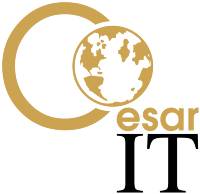CSS - The Common Sence® Simulation Game
The 'Real-World' IT Service Management Simulation for:
Managers, Staff of IT Service Centers, Project Managers, Business Managers.
Objectives
At the end of the training the participant:
· will understand how the various ITIL processes can contribute to making an IT organization manageable;
· can identify the bottlenecks in control of processes and initiate improvement actions;
· can put theory into practice;
· is able to recognize and understand the key concepts of ITIL and relate them to the relevant control processes.
Simulation Training
Simulation trainings are an accepted and highly successful training method, where participants gain ‘hands-on’ experience of how to deal with process-related problems.
Common Sense© Simulation Game
Common Sense© has been designed to stimulate and encourage the participant to think about the problems encountered and how to solve them in an effective and efficient way, using the ITIL processes and knowledge. At the beginning of the simulation performance will generally be mediocre, but as the simulation progresses participants will be able to identify themselves with the problems presented, and consequently will apply the ITIL principles - and thus improve their own performance and results during the simulation. It also becomes clear that the ITIL principles alone are not enough to improve performance; communicative and client-focused skills are needed as well. This approach leaves no doubt that this is a real-world training, not just dull theory. During the simulation participants get a good idea of how the ITIL processes are interrelated, because they have experienced the various perspectives, and can actually see ITIL work.
Structure
During the simulation the players enact ‘production cycles’ during which the trainer will introduce a variety of breakdowns into the infrastructure. The management team’s task is to optimize availability, so breakdowns must be dealt with effectively and efficiently. In addition, the correct priorities must be determined. Performance is measured after each ‘production cycle’ and the results are compared to the agreements laid down in the appropriate service contracts. Participants are given the opportunity to enumerate the problems, propose solutions, and implement improvements for the following production cycle. After a maximum of four production cycles the session is concluded with a general evaluation.
Duration
Common Sense© lasts 8 hours, depending on the composition of the participating group and the specific learning objectives.
Participants experience the reality of:
· How the ITIL principles can contribute to the improved performance of an IT service center;
· How ITIL's Lifecycle Management works in practise;
· How the customer experiences IT services;
· How ITIL works (or not!);
· The implementation of process-related improvements;
· The importance of Lifecycle Management.
Target group
Managers and staff of IT service centers (e.g. a computer center), application and project managers, business managers, etcetera.
Players
Common Sense© has been developed for groups of 10 to 22 participants, each of whom is given a role in the simulation. The simulation “real-world” situation consists of four different organizations:
The Airport company “Sky High”, the Internal IT departments of the Airport “High Q” and two Suppliers. One supplier does deliver Consultating “Good Will” and the other one delivers the equipment “On Time”.
The performance of the Airport is very depending on the capability of the IT departments to deliver the promised IT services timely and effectively. Of course each of the organizations want to make profit, so the delivery of the services also has to be done in an efficient manner.
During each cycle performance is being measured based on for example the following indicators:
· The number of aircrafts actually able to take off:
· The availability of the necessary components.
These key-performance indicators (KPI's) will be set out in a service level agreement (SLA).
Thus – a real-world business simulation game with real-world examples, people, knowledge, experiences and implications. Exclusively developed by Cesar IT, and a very useful enhancement for our participants.
Background of The IT Infrastructure Library (ITIL)
The UK government realized that whilst considerable effort was being directed towards reducing costs and risks associated with project development there was very little guidance available on how to control IS systems once they had gone live. Research suggested, however, that over 80% of the lifetime cost of a computer service was related to its day to day operation, and only 20% to the development stage.
In response to this the IT Infrastructure Library (ITIL) was developed by CCTA, the UK government's center for information systems. It is the most comprehensive, structured approach to IT service provision currently available. The IT infrastructure encompasses all the hardware, software and telecommunications, upon which application systems and services are built and delivered.
The library comprises modules that bring together the best IT practices within the public and private sectors.
In order to produce the library several years have been spent in consultation with government departments, large private sector companies and the computing industry, making this the first ever fully comprehensive guide to the technical management of IT services. The Library is therefore an approved standard for IT service management and is the de facto standard.
Without IT, most businesses cannot function; without quality IT, they cannot function well. The guidance in the Library helps organizations provide their IT services to an accepted quality standard. The major results of using ITIL guidance are the improvement of customer services and the reduction of costs and risks. The library is non-proprietary, publicly available, published by HMSO and has
been produced using procedures certified to the ISO-9001/BS5750 standard.

